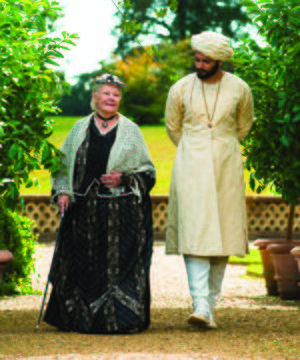How Historically Accurate Is Victoria and Abdul
Victoria and Abdul is a 2017 movie set in the late Victorian period in 1887-1901. Abdul Karim was appointed as a household servant to Queen Victoria and he became a close friend and teacher (or Munish) to the queen, lasting until her death. The movie depicts this relationship and the various forms of racism and animosity encountered by Abdul as he navigated being a person of South Asian decent who rose to prominence in the household during the Victorian period.
Plot
Abdul Karim is a cleric serving in Agra India for the British rulers. He is selected to go to Britain, along with a colleague Mohammed, for the Queen's Golden Jubilee, marking 50 years on throne. Initially, both men are surprised by this appointment but dutifully go. The men are trained for the ceremonies that are to follow for the Jubilee celebrations, but they are treated poorly given uncomfortable accommodations that are damp, cold, and cramped. When it comes time, however, for the men to play their role, and after the Queen arrives for a formal banquet with her guests, she receives a mohur, a type of gold coin, from Abdul. This was an item that was to represent a gift from India to Victoria, as she is Empress of India. However, the Queen is more fascinated with Abdul than anything else. She soon forms a bond with him, asking him to teach her Urdu and about Islam. Nevertheless, their relationship suddenly grows tense when she finds out Abdul is married. She then decided to have him go back and bring his wife to live in England along with Abdul, with him continuing to serve her in her household. Meanwhile, the other courtiers are increasingly bothered by the close relationship Abdul and Victoria form, including Edward, the future King of Great Britain, who is troubled by his mother's relationship with Abdul. Victoria, recognizing she is Empress of India, wants to learn more about India and decides to decorate part of her home in the Isle of Wight in an Indian style. She continues to make progress in understanding Urdu. Abdul now has the formal title of Munshi as Victoria's teacher.
Abdul and Victoria form a close relationship that is like mother and son, with Victoria preferring to spend more time with Abdul than her own son. However, the court begins to create trouble. First, they call out a lie that Abdul told Victoria about the Indian Mutiny, where he downplayed rebellions by some of the Indian population. After learning about this lie, Victoria decided to expel Abdul but then changes her mind. They also learn that, despite Abdul's initial presentation, Abudl does not have royal or noble blood, thus he exalted his social status to Victoria. The Marquess of Salisbury, who is Prime Minister, also gets involved in trying to get rid of Abdul. The court officials and Prime Minister find out Abdul has gonorrhea, but again the Queen stays loyal to Abdul. With all this plotting, the Queen now decides to Knight Abdul, which the entire household of the Queen finds completely unacceptable. The staff threaten to resign unless Victoria rescinds her offer to Abdul. She then confronts her entire household about their rebellion, although none offer to resign. The Queen informs her household though she will only make Abdul a Commander of the Royal Victorian Order, a lower honour than being knighted. Soon after, the Queen becomes increasingly sick and becomes bedridden. She realizes that the court will turn against Abdul once she is gone. However, Abdul stays with the Queen until her end. However, just as the Queen predicted, soon after she dies the court and Edward turn on Abdul. They destroy his gifts and even the Queen's own accounts of her time with Abdul, leaving relatively little for historians. Abdul's wife saves on present, a locket, while they are then forced to flee back to India. A few years later, Abdul is shown still talking and revering the Queen by tending to her statue in an area near the Taj Mahal. In 1909, Abdul dies and it much of the story about Abdul only came to light years after Victoria died.
Main Characters
Most of the characters were historical characters. Much of the bigotry and jealousies are based on accounts given from Victoria's own writings.<re>For more on Victoria's court, see: Schomp, V (2010) Victoria and Her Court. Life in Victorian England. New York: Marshall Cavendish Benchmark.Cite error: Closing </ref> missing for <ref> tag
